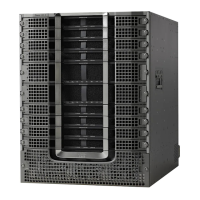PurposeCommand or Action
Enters Call Home configuration mode.call-home
Example:
Router(config)# call-home
Step 3
Enters the Call Home destination profile configuration mode for
the specified destination profile. If the specified destination profile
does not exist, it is created.
profile name
Example:
Router(cfg-call-home)# profile profile1
Step 4
(Optional) Enables the message transport method.destination transport-method {email | http}
Step 5
Example:
Router(cfg-call-home-profile)# destination
transport-method email
• email—Sets the email message transport method.
• http—Sets the HTTP message transport method.
The no option disables the
method.
Note
Configures the destination email address or URL to which Call
Home messages are sent.
destination address {email email-address | http
url}
Step 6
Example:
Router(cfg-call-home-profile)# destination
address email myaddress@example.com
When entering a destination URL, include either http://
or https://, depending on whether the server is a secure
server. If the destination is a secure server, you must also
configure a trustpool CA.
Note
(Optional) Configures a preferred message format. The default
is XML.
destination preferred-msg-format {long-text |
short-text | xml}
Step 7
Example:
Router(cfg-call-home-profile)# destination
preferred-msg-format xml
• long-text—Configures the long text message format.
• short-text—Configures the short text message format.
• xml—Configures the XML message format.
(Optional) Configures a maximum destination message size for
the destination profile.
destination message-size bytes
Example:
Router(cfg-call-home-profile)# destination
message-size 3,145,728
Step 8
Enables the destination profile. By default, the profile is enabled
when it is created.
active
Example:
Router(cfg-call-home-profile)# active
Step 9
If you activate a profile which enables smart-licensing data while
smart-licensing data is already being reported in another active
profile, you will receive an error message.
Configures the type of data to report for a profile.reporting {all | smart-call-home-data |
smart-licensing-data}
Step 10
You can select either to report Smart Call Home data or Smart
Licensing data. Selecting the all option reports data for both types
of data.
Example:
Router(cfg-call-home-profile)# reporting
smart-call-home-data
Cisco cBR Series Converged Broadband Routers Troubleshooting and Network Management Configuration Guide
for Cisco IOS XE Fuji 16.8.x
11
Call Home
Configuring Call Home

